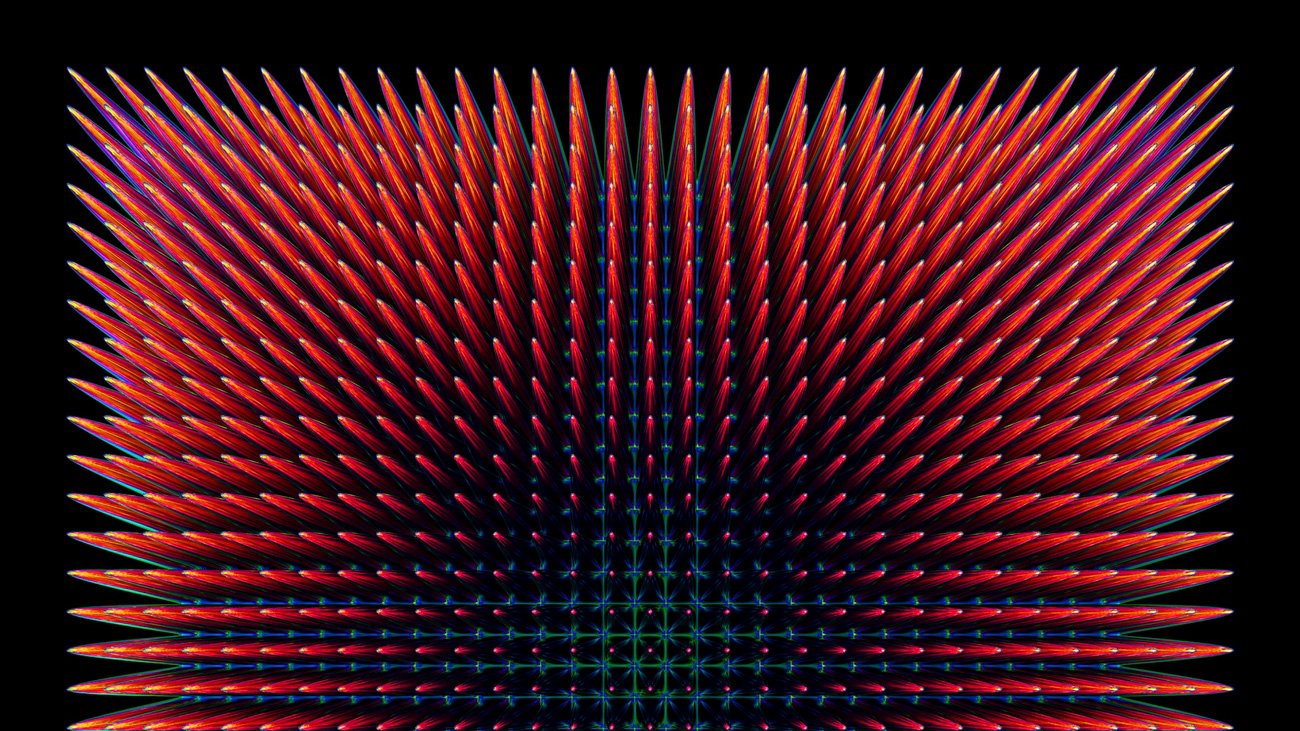In this thought-provoking blog post, we delve into the world of techno music and its capacity to transcend its role as a mere dancefloor stimulant. We ponder the intriguing question: Should techno music evolve into a medium for storytelling, offering a deeper connection by communicating the experiences and emotions of both its creators and listeners?
We navigate the ongoing debate between those who champion the physical experience of techno and those who advocate for its potential to convey profound meaning and messages. Join us on this philosophical exploration as we unravel the complexities and implications of storytelling in techno music, inviting you to share your own insights and perspectives on this riveting topic.

Techno as a narrative art
Techno has always been associated with pulsating and driving rhythms that make it a staple of dance clubs worldwide. However, there is a growing movement within the techno community that believes the genre should be more than just a means to move bodies on the dancefloor. Instead, they argue that techno music should tell stories, communicating the experiences and emotions of its creators and listeners through its sounds.
The definition of storytelling in music
Storytelling in music spans across history, from ancient oral traditions to modern genres. Stories captivate, engage, and bring coherence. Techno, too, can harness this power.
Storytelling in music involves using musical elements, arrangements, and textures to create narrative experiences that evoke emotions and convey deeper meanings. It goes beyond rhythm and energy, engaging listeners on a profound level.
Techniques like dynamic shifts, evolving melodies, layered textures, or the integration of vocal samples are employed to craft these narratives, exploring various themes and inviting personal interpretation. It creates a meaningful and immersive experience, allowing listeners to reflect, connect, and engage beyond the dancefloor.
Should techno tell stories?
From a philosophical perspective, the idea that techno music should tell stories speaks to the role of art in society. Art has always been a means for humans to communicate meaning and significance, and to express their deepest emotions and thoughts through creative expression. As such, art is an essential component of human culture and society, serving as a means of connection and communication between individuals and communities.
The argument that techno music should tell stories is rooted in the belief that music, like all art, is a form of narrative expression.
By its very nature, music has the ability to convey emotions and experiences in a way that transcends language and cultural barriers. Through its rhythms, melodies, and textures, music can communicate complex and nuanced emotions and experiences that might otherwise be difficult to put into words. This idea is particularly relevant to techno music, which is often characterized by its minimalist aesthetic and repetitive rhythms.
Proponents of the narrative approach to techno argue that the genre’s simplicity and repetition can be used to significant effect in telling stories.
By carefully crafting the sounds and rhythms of their music, techno artists can create sonic narratives that take listeners on a journey through different emotional and psychological states.
While there may not be specific artists who universally claim that techno music should tell stories, there are certainly a few well-known artists who have expressed their views on incorporating storytelling elements within their techno productions.
One of them is the renowned techno producer and DJ, Jeff Mills, who has often emphasized the importance of storytelling in his music. He has spoken about his approach to creating sonic narratives and using music as a means to convey themes, concepts, and emotions.
“I see techno music as a special form of storytelling. Without words or images, the sound style can make the listener feel as if what is being presented is about [something in particular, for example,] the future or outer space.” – Jeff Mills (Source)
Emotional snapshots as a form of storytelling
While emotional snapshots in techno music may not follow a traditional narrative structure with a clear beginning, middle, and end, they capture and convey a particular emotional state or moment in time and thus can be considered a form of storytelling.
In techno music, emotional snapshots often manifest through the use of sonic elements such as melodies, harmonies, textures, and rhythms. These elements can evoke specific moods, and atmospheres, or even trigger a cascade of emotions. The sonic palette employed by techno artists allows them to paint vivid emotional landscapes, conveying a range of feelings from joy and euphoria to melancholy and introspection.
Each individual may bring their unique perspectives, memories, and associations to the music, forming a personal connection that becomes part of their own narrative interpretation.
Moreover, when emotional snapshots are sequenced and arranged intentionally by artists within a set or an album, they can create an overarching emotional arc or progression. This sequence of snapshots can generate a sense of narrative flow.
In this way, emotional snapshots in techno music can be seen as a way of storytelling, albeit through a more abstract and non-linear approach.
Emotional snapshots in Detroit techno
Detroit techno is often characterized by its emotive and timeless quality, evoking a sense of nostalgia or reflection. Rather than explicitly telling stories with a beginning, middle, and end, Detroit techno tracks often create atmospheric experiences that resonate with the listener on an emotional level.
Detroit techno pioneers like Juan Atkins, Derrick May, and Kevin Saunderson, among others, played a significant role in shaping the genre and emphasizing its emotive qualities. Their music often combines lush synthesizer melodies, soulful chords, and driving rhythms to create a distinctive sound that resonates with the listener’s emotions.
However, it’s important to note that not all Detroit techno tracks follow this approach, and there can be variations within the genre. Some tracks may indeed incorporate storytelling elements or follow more traditional narrative structures.
The beauty of music, including Detroit techno, lies in its ability to evoke different responses and interpretations from listeners, allowing them to find their own meaning and emotional connection within the music.
One philosophical viewpoint could argue that both story-telling and emotional snapshots have value in techno music, as they offer distinct ways of engaging with and appreciating the art form.
Storytelling can provide a sense of coherence and meaning, allowing listeners to follow a musical narrative and find a connection with the experiences and intentions of the artist. Emotional snapshots, on the other hand, can bypass language and intellectual understanding, appealing directly to our emotions and creating profound moments of introspection and catharsis.

Techno as a physical experience
The opposite of storytelling in music is an abstract, non-narrative approach found in techno. It prioritizes sound design, rhythmic intricacy, and immersive atmospheres over explicit storytelling.
This approach emphasizes the experiential qualities, focusing on the physicality and energy of the music.
Techno tracks explore repetitive patterns, hypnotic rhythms, and intricate soundscapes, bypassing traditional narratives. It engages listeners instinctively, embracing the abstract nature of the genre.
While not all members of the techno community agree that techno should tell stories, some argue for appreciating techno’s pure expression of sound, rhythm, and energy. They see storytelling as a distraction from the essential qualities that make techno music compelling.
For them, the emphasis lies on the physical experience rather than deeper meanings or messages.
Notable artists like Richie Hawtin embody this perspective. He emphasizes minimalism and the exploration of pure sound, suggesting a more abstract, non-narrative approach to techno.
It is important to note that these artists may not explicitly reject storytelling in techno, but instead emphasize other aspects of the music, such as sound design, rhythmic intricacy, or the communal experience of the dancefloor. The techno community is diverse, and artists’ perspectives can vary widely, reflecting the breadth of artistic expression within the genre.
Conclusion
In conclusion, the idea that techno music should tell stories is a fascinating and thought-provoking viewpoint on this vibrant and dynamic genre. Even those who reject the idea that techno should tell stories can benefit from considering the philosophical implications of this perspective. By viewing techno music as a form of narrative art, we gain a deeper appreciation of its richness and complexity. We begin to see techno not just as a soundtrack for dancing, but as a means of communication, connection, and expression.
Moreover, the idea that techno music should tell stories has important implications for our understanding of art and its role in society. It reminds us that art is not just about aesthetics or entertainment, but about communication and expression. It encourages us to approach all forms of art with a more critical and reflective mindset, seeking to understand the messages and meanings that lie beneath the surface.
We want to hear from you!
Readers, we would love to hear from you! Do you believe that techno should tell stories, or do you prefer it as a purely experiential and energetic form of music? How do you personally engage with techno music? Do you find emotional snapshots within techno tracks to be a form of storytelling?
Feel free to express your perspectives, share examples of artists or tracks that align with your viewpoint, or even offer counterarguments to the idea that techno should tell stories. Your insights and experiences can contribute to a richer and more nuanced discussion around the philosophical implications of storytelling in techno music.